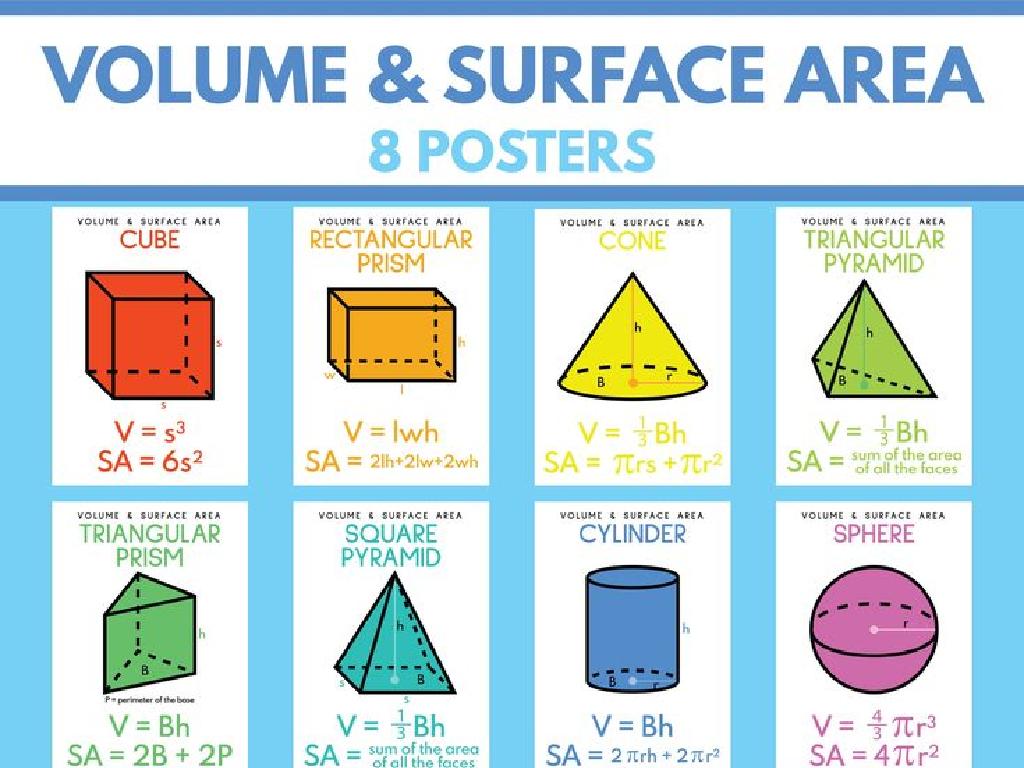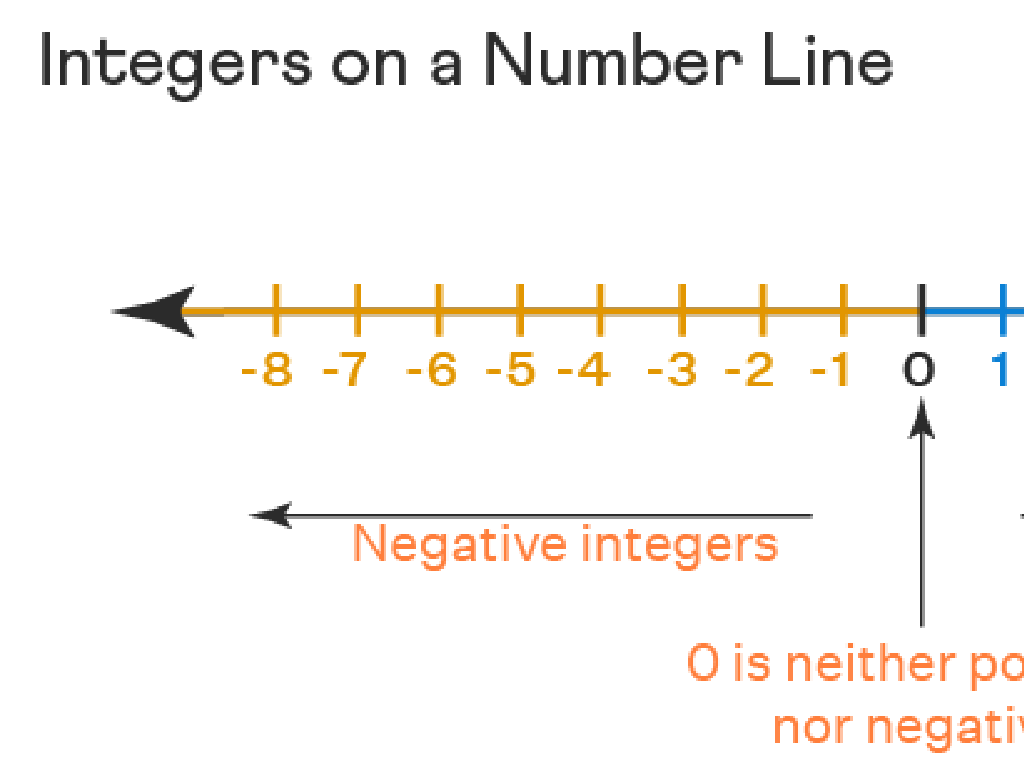Form Regular Plurals With -S, -Es, -Ies, And -Ves
Subject: Language arts
Grade: Fourth grade
Topic: Nouns
Please LOG IN to download the presentation. Access is available to registered users only.
View More Content
Nouns and Their Plurals
– Singular vs. Plural Nouns
– Singular noun: one item, Plural noun: more than one
– Definition of Nouns
– A noun is a person, place, thing, or idea
– Forming Plurals: -s, -es, -ies, -ves
– Add -s to most nouns, -es to nouns ending in s, x, z, ch, sh; change y to i and add -es; for some nouns ending in f or fe, change to -ves
– Practice with examples
|
This slide introduces the concept of singular and plural nouns, providing a foundation for understanding how to form plurals. Start by explaining that nouns can be singular (one) or plural (more than one). Define a noun as a word that names a person, place, thing, or idea. Then, focus on the rules for forming plurals: most nouns simply add -s, but there are special rules for nouns ending in s, x, z, ch, sh (add -es), nouns ending in y (change y to i and add -es), and some nouns ending in f or fe (change to -ves). Provide examples for each rule and encourage students to come up with their own examples. This will help them understand and remember the rules for forming plurals.
Exploring Plural Nouns
– What are Plural Nouns?
– Words that describe more than one thing, like ‘cats’ or ‘dogs’.
– Singular vs. Plural Examples
– ‘Cat’ is to one as ‘cats’ is to many. ‘Bus’ becomes ‘buses’.
– The Purpose of Plurals
– Plurals let us talk about more than one item.
– Rules for Forming Plurals
– Add ‘s’, ‘es’, ‘ies’, or ‘ves’ to make most nouns plural.
|
This slide introduces the concept of plural nouns to the students. Begin by defining plural nouns as words that indicate more than one person, place, or thing. Provide clear examples by showing singular nouns and their plural counterparts, such as ‘cat’ and ‘cats’, or ‘bus’ and ‘buses’. Explain the importance of plurals in everyday communication, as they allow us to specify quantity and make our sentences clear. Finally, outline the basic rules for forming plurals, emphasizing the different endings like -s, -es, -ies, and -ves, and when to use each. Encourage students to think of their own examples and to understand that these rules help us write and speak correctly about multiple items.
Forming Plurals with -s
– Most nouns add -s for plural
– ‘cat’ turns into ‘cats’
– One cat, two cats
– ‘book’ changes to ‘books’
– One book, many books
– Practice with different nouns
– Find nouns around you and make them plural
|
This slide introduces the basic rule for forming plurals by adding -s to most singular nouns. Start by explaining that the plural form of a noun represents more than one of that thing. Provide clear examples with common nouns like ‘cat’ and ‘book’ to illustrate the concept. Then, engage the students with an interactive activity where they look for objects in the classroom or think of other nouns they know and try to form the plural versions. Encourage them to share their examples with the class. This will help reinforce the rule and ensure they can apply it to a variety of words.
Forming Plurals: When to Use -es
– Add -es to words ending in -sh, -ch, -ss, -x, -z
– ‘bus’ turns into ‘buses’
– For example, ‘glass’ becomes ‘glasses’
– ‘church’ changes to ‘churches’
– Similarly, ‘box’ becomes ‘boxes’
– Let’s practice with more examples together!
|
This slide focuses on teaching students the rule for adding -es to make plurals. It’s important to explain that this rule applies to words ending in -sh, -ch, -ss, -x, and -z because simply adding -s would not sound correct. Provide clear examples like ‘bus’ to ‘buses’ and ‘church’ to ‘churches’. During group practice, use interactive examples and encourage students to come up with their own words that follow this rule. You can use flashcards, a matching game, or a fill-in-the-blank activity to make this practice engaging. Aim for a variety of examples to ensure students grasp the concept.
Forming Plurals: Changing -y to -ies
– Consonant + -y to -ies
– If a noun ends with a consonant before the -y, we use -ies for the plural.
– ‘puppy’ to ‘puppies’
– For the word ‘puppy’, the -y changes to -ies making it ‘puppies’.
– ‘lady’ to ‘ladies’
– Similarly, ‘lady’ ends with a consonant and -y, so it becomes ‘ladies’.
– Practice with examples
– Try changing ‘city’ to its plural form and see what you get!
|
This slide focuses on teaching students how to form plurals for nouns ending in a consonant followed by -y. Start by explaining the rule and then provide clear examples. ‘Puppy’ and ‘lady’ are good examples because they are common words that the students are likely to know. After explaining the rule and showing examples, give the students a chance to practice with guided examples. You can use words like ‘city’, ‘baby’, and ‘party’ for individual practice. Encourage the students to come up with more words that follow this rule and write their plural forms. This activity will help reinforce their understanding of the concept.
Forming Plurals with -ves
– Change -f or -fe to -ves
– ‘knife’ to ‘knives’
– A single cutting tool becomes multiple cutting tools
– ‘leaf’ to ‘leaves’
– One part of a plant becomes many parts of the same plant
– Brainstorm more -ves words
– Think of words ending in -f or -fe and how they change
|
This slide focuses on teaching students the rule for forming plurals by changing -f or -fe to -ves. Start by explaining the rule and providing clear examples with ‘knife’ and ‘leaf’. After discussing these examples, engage the class in a brainstorming activity to come up with other words that follow this rule. This activity will help reinforce the concept and ensure students can apply the rule to other words they encounter. Encourage students to think of items at home or in the classroom that might follow this pattern and be prepared to discuss why some words use -ves for plurals while others simply add -s.
Exceptions to Plural Rules
– Some nouns break the rules
– Irregular plurals examples
– ‘child’ to ‘children’, ‘mouse’ to ‘mice’
– Discussing rule exceptions
– Why might some words not follow the pattern?
– Understanding irregular forms
– Not all words end with -s, -es, -ies, or -ves
|
This slide introduces students to the concept that not all nouns follow the regular pluralization rules. Start by explaining that while many words become plural by adding -s, -es, -ies, or -ves, there are some exceptions. Provide examples of irregular plurals and ensure students understand that these words do not fit the standard pattern. Engage the class in a discussion about why these exceptions might exist, possibly exploring the historical and linguistic origins of these irregularities. Emphasize that language can be unpredictable and that memorization and practice are key to mastering these exceptions.
Class Activity: Plural Scavenger Hunt
– Search for objects in the classroom
– Note singular and plural forms
– Example: ‘desk’ becomes ‘desks’, ‘box’ becomes ‘boxes’
– Share your plural list with peers
– Discuss the spelling changes
– Why does ‘baby’ change to ‘babies’ but ‘toy’ to ‘toys’?
|
This interactive activity is designed to help students understand the concept of forming regular plurals. Students will move around the classroom to find objects they can count. They will write down the singular and plural forms of each noun they find, paying special attention to the spelling changes that occur when forming plurals. After the hunt, students will share their lists with the class and discuss the patterns they noticed, such as when to simply add ‘-s’ or when to change a ‘y’ to ‘ies’. The teacher should facilitate the discussion, guiding students to understand the rules for forming plurals with -s, -es, -ies, and -ves. Possible variations of the activity could include grouping students to find items of a certain category or assigning different rules to different groups to compare findings.
Plural Nouns: Recap and Homework
– Review plural nouns rules
– Remember: add -s, -es, -ies, or -ves to make nouns plural
– Understand why practice matters
– Regular practice helps us remember the rules
– Homework: 10 plural sentences
– Use each type of plural form in sentences
|
As we conclude today’s lesson, let’s recap the rules for forming plurals. It’s important to remember these rules and practice them, as plurals are a fundamental part of English grammar. For homework, students are to write 10 sentences, each using a different plural form. This will help reinforce their understanding and ensure they can apply the rules to various words. Encourage creativity and the use of a dictionary if they are unsure about how to form the plural of a word. In the next class, we can review some of the sentences to highlight the correct usage of plural forms.





